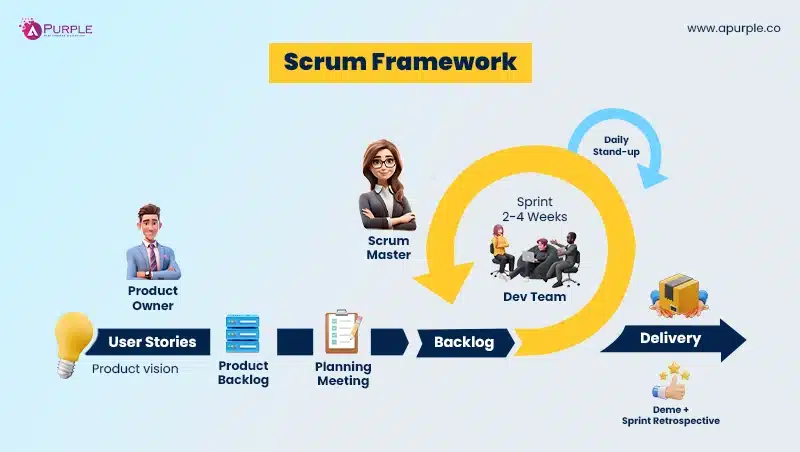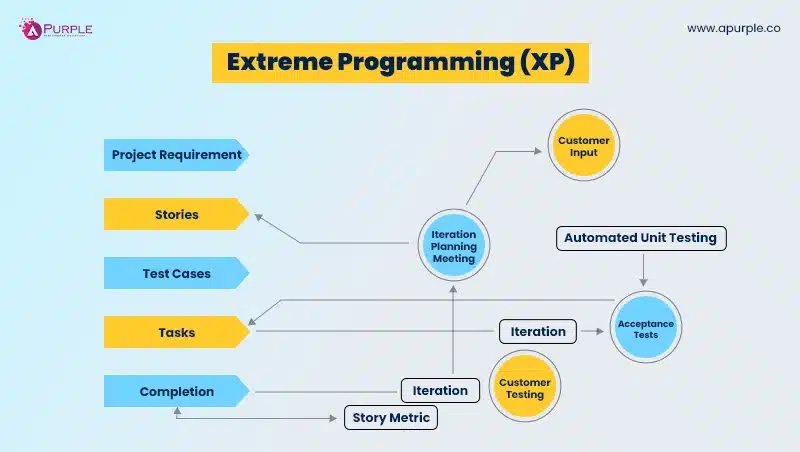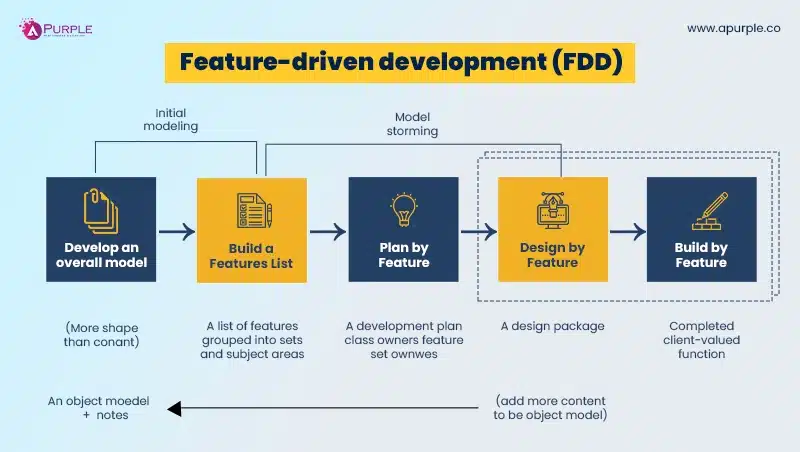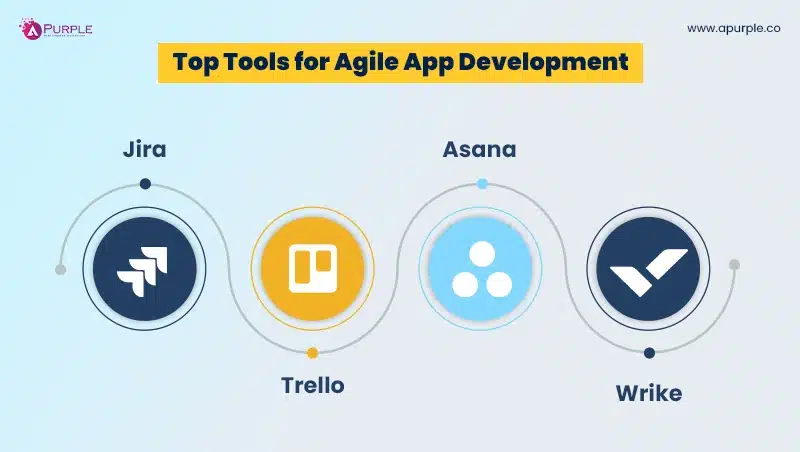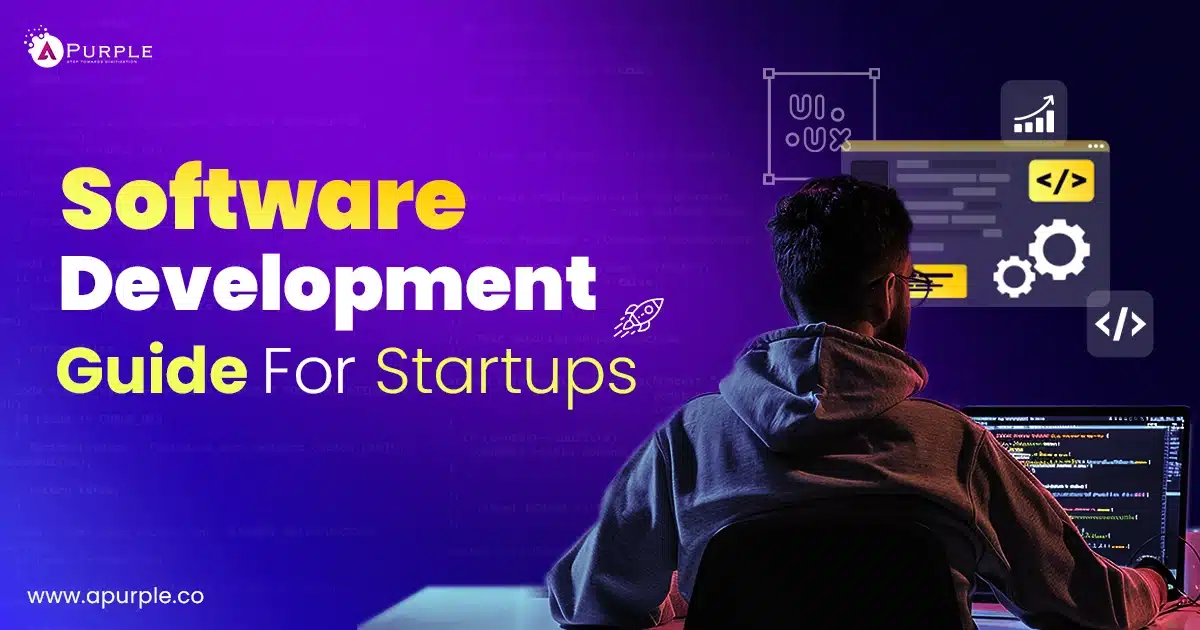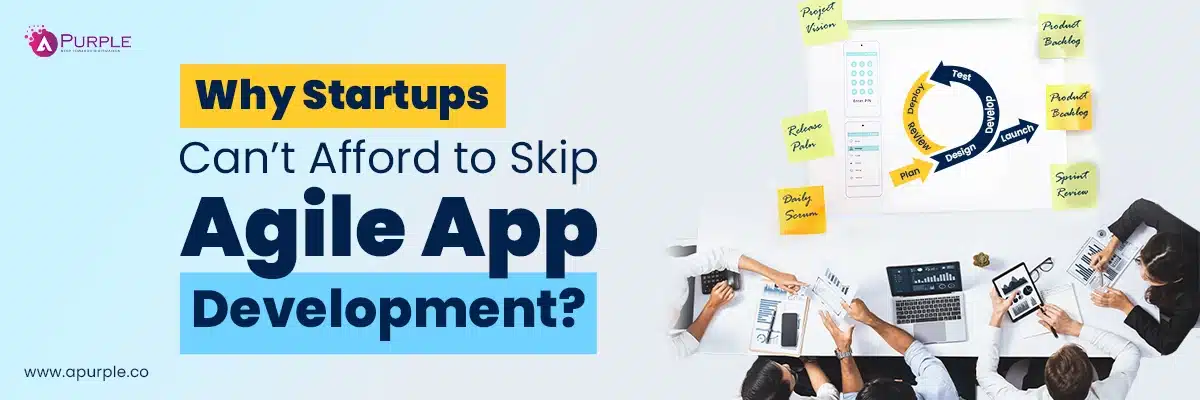
Many startup founders find the approach exciting but need help with its adoption. Entrepreneurs face several challenges while applying agile to their app development projects. This piece explores how startup founders can overcome the obstacles of agile app development.
Most startup owners need help to go from 0 to 1 with their software development projects. This becomes much more challenging for entrepreneurs with non-tech backgrounds. Imagine trying to build a tech product, hire developers and a CTO, and manage the non-tech side of the startup.
This balancing act needs an anchor, and that is where agile app development comes into play. It is an iterative approach to software product development that breaks your project into smaller tasks. This helps you gradually build the product without massive investment and effort. Moreover, agile allows you to test and validate the product with each iteration so you can offer a more refined user experience with each update. Agile app development is instrumental in making you quickly adapt to necessary changes so you can deliver better results.
However, adopting agile has its own set of challenges. From resistance within the organization to a new approach to DevOps and CI/CD implementation issues, adopting agile can be daunting. This article will focus on your questions about agile app development, what makes it ideal for your development projects, what its challenges are, and how you can overcome them.
What is Agile Application Development?
Agile application development is an umbrella term.
It is a collection of different methodologies and processes. These methodologies optimize collaborations, iterations, and adaptation to market changes. The goal of the agile approach is simple: deliver value to the customer faster!
The agile app development process is divided into short sprint cycles lasting 2-4 weeks. Each sprint has cross-functional teams working on specific tasks. At the end of the sprint, task outcomes are evaluated, and based on the result, the next sprint is planned.
In the context of your app development, this process involves teams working on a minimum viable product(MVP) first. At the end of the sprint, MVP is tested, and test results are used to build the next iteration. So, it is a continuous process that helps your startup improve the product with each iteration.
Before you use agile, it’s essential to understand that this approach is not for everyone. Agile can prove detrimental, especially if you have a fixed scope and your timelines are tight. Here are some key differences between agile and traditional development approaches to help you decide whether it suits your startup.
How Agile App Development Differs from Traditional Development?
Before choosing agile for mobile app development, you must compare it with the traditional approach. This will help you validate whether agile is suitable for your startup. Here are some key differences between the two approaches,
| Characteristics | Agile App Development | Traditional App Development |
|---|---|---|
| Development Approach | Iterative cycles or sprints | Linear |
| Flexibility | Highly flexible | Lacks flexibility |
| Project Timeline | There is no fixed timeline, and it is a continuous process | Has fixed timeline |
| Delivery of Projects | Continuous delivery approach | Delivers full-fledged product |
| Involvement of Customers | Involvement with each iteration | Minimal iteration |
| Costs | Reduced costs | Higher costs |
| Process of Testing | Continuous integration and automated testing. | Testing is only executed after the app is ready. |
Understanding these differences will help you understand why agile is crucial for your startup. Agile makes more sense if you are developing a tech product from scratch. If you decide to use agile, you can use many different methodologies, like Kanban, Scrum, and Extreme Programming(XP).
4 Types of Agile Methodologies for Mobile App Development Startups
Here are some of the critical agile methodologies to use for your app development project.
1. Kanban
Kanban provides flexibility and visual frameworks for better collaborations. It is designed to help you visualize your development tasks, limit work in progress, and maximize work efficiency.
The Kanban methodology involves tracking tasks across teams through visual boards. Each board has different columns for planned, ongoing, and completed functions. It helps you track each development task and help identify critical bottlenecks blocking the process flow. The Kanban board also helps keep the whole team on the same page.
2. Scrum
Scrum is one of the most popular agile methodologies. Its strong focus on collaboration brings teams together, which is why 66% of Agile businesses prefer Scrum. Teams using Scrum deliver 250% of improvements in app quality.
Scrum is similar to Kanban in many ways. Like Kanban, it consists of a board. However, one aspect where the debate of Kanban vs Scrum sets in is the task completion pattern. In Scrum, the team has to complete their task within a specific period known as a sprint. It involves sprint planning, sprint review, incremental delivery, and transparency.
3. Extreme Programming (XP)
Extreme Programming (XP) is also similar to Scrum methodology. XP mainly focuses on continuous development and delivery. However, extreme programming (XP) involves several processes to ensure efficient software development:
- Planning game– A collaborative approach where developers and customers prioritize features.
- Small releases– Releasing software in small, recurring iterations to collect quick feedback minimizes the risk.
- Customer acceptance tests– Ensures that the software meets customer requirements, improving satisfaction and reducing work.
- Simple design– Focuses on creating a straightforward solution, minimizing complexity, and improving responsiveness.
- Pair programming– Two developers work together on the same code, enhancing code quality and knowledge sharing.
- Test-driven development– Writing tests before code ensures high-quality, bug-free software and reduces future maintenance costs.
- Refactoring– Continuously improving code quality and structure to keep it clean, maintainable, and adaptable to changes.
- Metaphor– Using a shared, simple analogy to communicate the design and architecture of the system, ensuring clarity
- Sustainable pace– It helps manage work that prevents burnout and ensures long-term productivity and high-quality code delivery.
4. Feature-Driven Development (FDD)
Feature-driven development (FDD) is a framework that structures the entire software development around features. Every feature is designed, developed, and deployed separately, making the process manageable.
FDD helps your team update the project with new features, improving user experience. Unlike Scrum teams, FDD teams rely on documentation to communicate essential data for software development.
These methodologies help you adopt agile for your startup projects. However, adopting agile has challenges, and strategic planning is needed to overcome them.
Agile App Development Challenges for Startups: Solutions and Strategies
Here are some critical agile app development challenges that entrepreneurs face,
1. Resistance To Change
If you plan to use agile for mobile app development, the first challenge will be your team’s resistance. Members of your team may fear being overworked if you choose agile, which requires cross-functional teams.
Here are some solutions to overcome resistance among employees to agile adoption,
- Adopt agile methodology in app development incrementally rather than full-fledged implementation.
- Arrange training sessions for the employees to understand the benefits of agile.
- Define key roles and responsibilities to minimize the perception of overwork.
2. Lack of Agile-Specific Skills
Many startups face the challenge of a lack of agile-specific skills. Hiring app developers with agile-specific skills is not always feasible for small-scale startups, which can slow down agile adoption and lead to inefficient software development.
To overcome this challenge, you can,
- Consult agile coaches to train your team members.
- Apply the concept of “fail fast, learn faster.” to use micro-projects and test agile practices with low risk.
- Ensure teams brainstorm on real-case scenarios to test the impact of agile on the outcomes.
3. Overcoming Budget Constraints For Agile Tools
Early-stage startups have budget constraints, which limits agile adoption. Teams can’t access paid agile-specific tools. Tools like Trello, Jira, or Confluence have limitations on their free versions. This means if startups scale agile adoption, these tools become a bottleneck.
To overcome this, you can –
- Try free or low-cost tools such as Asana, Notion, or ClickUp.
- Use open-source frameworks such as Taiga, Tuleap, or OpenProject.
- Take free trial tools to test and then invest gradually.
4. DevOps and CI/CD Implementation Problems
DevOps promotes collaboration between development and operations teams, streamlining communication. Continuous Implementation (CI) and Continuous Delivery (CD) emphasize automation to accelerate the agile app development process. Both are crucial to your startup and yet challenging to implement.
DevOps is a culture, so your teams need to embrace it. The cross-functional DNA of agile stems from DevOps. So, if you adopt agile, DevOps becomes integral to the adoption process. However, resistance to DevOps becomes a challenge. Plus, you must restructure the software development process flow per DevOps.
This means automating the deployment leveraging CI/CD pipelines. CI/CD constantly integrates code changes and their automatic deployment. Ensuring your teams keep up with the pace of CI/CD implementations can be complex. These challenges often arise from establishing effective coding, testing, or deploying software workflows.
To address these issues, you can,
- Use tools like Jenkins, GitLabs, OR GitHub.
- Start adopting managed services like AWS CodePipeline or Azure DevOps.
Each agile adoption challenge has a specific solution and tool that you can use. These tools help you apply agile practices and optimize them for better efficiency.
Read also: comprehensive comparison of Agile vs Waterfall methodologies in app development.
Top Tools for Agile App Development For Startup
Here are some of the top agile app development tools you can use.
1. Jira
Jira is a project management tool designed to help teams track, manage, plan, and schedule software development tasks. It keeps teams focused and motivated by splitting large, complicated tasks into smaller, more manageable sprints.
The core features of Jira software are –
- Jira supports scrum and kanban frameworks, which helps teams choose one agile methodology that fits their workflow.
- It is a convenient place to create, store, and manage issues such as significant features, tasks, and software bugs. It is done by listing issues your team plans to work on and all the team’s problems.
2. Trello
Trello is a collaboration tool that organizes projects into boards similar to Kanban boards. It offers insights into what’s being worked on and who’s working on what tasks.
Trello is a whiteboard with sticky notes, each representing a task for you and your team. It also allows team members to add start dates, deadlines, and milestones. It offers features like,
- Trello allows team members to add relevant documents directly to the cards.
- It includes the feature of adding images to cards for better visual understanding.
- Trello allows you to add external links to the cards.
3. Asana
Asana flawlessly manages projects by transforming complicated workflows into structured, actionable tasks. Each task is clearly defined with due dates, deadlines, and priorities. Asana tools represent tasks in different ways, such as lists, boards, timelines, calendars, and Gantt charts.
Asana is essential for keeping the project on track and ensuring clear communication throughout its lifecycle. The top features of Asana are,
- Asana goes beyond sending text messages within the team. It allows team members to share task updates and details. You can also click the record button to shoot a video of any task description, comment, or message.
- You can set tasks to reoccur to avoid repeating them and save time.
- Allows you to assign tasks to up to 20 projects without duplicating them.
4. Wrike
Wrike is a versatile, agile tool for startups across business domains. It automates software development, increasing efficiency, improving collaboration, and nurturing strategic innovations.
Wrike combines traditional and agile approaches with customer workflows, making it ideal for teams managing diverse projects.
Here are key features that Wrike offers,
- Provides customizable workflows by supporting both Agile and traditional projects.
- Offers the flexibility of editing documents simultaneously
- Supports over 400 integrations with popular tools such as Microsoft Teams, Google Workspace, Slack, and more.
These tools play significant roles in agile app development, helping startup teams collaborate effectively. However, understanding the process of agile-based app development is crucial before you start using these tools.
3 Step Process of Agile Application Development
Agile application development involves several key stages, like requirements gathering, MVP development, and continuous testing.
Step 1- Requirements and Planning Stage
This step focuses on flexible and iterative planning, where requirements evolve throughout the development lifecycle. Startup owners can use this stage to determine essential resource requirements for a project. This involves how big a team the project will need, its infrastructure needs, and the processes it will require.
When you apply agile methodology, the requirements and planning stage are repeated with each iterative cycle. Some of the critical requirements-gathering activities are,
- Gathering feedback from earlier iterations
- Resource allocation
- Quality assurance
- Budget review
- Post-iteration review plan.
Step 2 – Comparing MVP and Full-Fledged Development in Agile
The next step is to develop a Minimum Viable Product (MVP). Here, startup founders need to decide between MVP and full-fledged development. However, if you use agile, MVP becomes the obvious choice.
It is a simplified version of the full-fledged product that focuses on delivering essential functionality. It allows customers to use a beta version of the software, providing valuable feedback that helps you refine and enhance the product.
The key benefits of using an MVP are:
- MVP allows you to launch a product in a shorter time.
- Helps you reduce development costs and time.
- Allows you to gather early user feedback and helps align the product with user needs and expectations.
Step 3 – Testing and Deployment Stages in Agile
Testing is integral to agile’s continuous improvement cycle. This step ensures high-quality code and enhanced user experience. Each version of your app is tested at the end of the iterative cycle before deployment.
Once deployed, the test results will be used to develop the next version of your application.
You can leverage automated testing for rapid development and efficient app performance.
Now that you know how to implement agile app development, it’s time to understand its future scope.
Future of Agile for App Development in Startups
Agile revolutionized the way software development is executed for many businesses. But now, some innovations are transforming startups using agile. Here is what you can expect from agile in the future for your app development projects.
AI in Agile Development
Artificial intelligence(AI) automates repetitive coding and testing activities for agile-based app development. It also offers real-time analytics and insights that help startups streamline their development process.
Combining AI with agile will help startups automate critical processes such as QA testing, continuous integration, and release scheduling. It will increase the speed of the development cycle and minimize the risks, ensuring a competitive edge.
Agile At Scale
When you scale agile-based app development, the size of teams will increase gradually. Manually managing teams becomes challenging for most organizations. Startups can use the following frameworks to scale agile adoption,
- Scaled Agile Framework (SAFe) – The scaled agile framework (SAFe) is a methodology that assists large organizations in implementing an iterative approach across processes.
- Large-Scale Scrum (LeSS)– This is a framework for scaling Scrum across multiple teams working together on a single product.
- Disciplined Agile Delivery (DAD)– DAD is a people-first, learning-oriented agile approach.
Business Agility
The agile methodology will help startups adapt more rapidly and efficiently to market changes. This approach allows businesses to continuously evaluate and refine their strategies based on real-time customer feedback.
Plus, you can leverage the iterative approach to add new features and functionalities as per customer demands. This helps you improve customer experience and ensure your application is up-to-date with market trends.
Conclusion
Markets evolve with changing customer preferences and increasing competition. Agile development provides the flexibility to respond to these changes, fosters collaboration, and prioritizes customer feedback.
Startups can use different agile methodologies to improve the time to market. However, successful app development requires expertise in implementing agile practices. That’s where aPurple can help.
aPurple is an experienced agile app development company offering custom solutions. Our expert agile app developers are committed to crafting innovative solutions for your projects.
Contact us today for a personalized agile app development plan, and start optimizing business outcomes.


